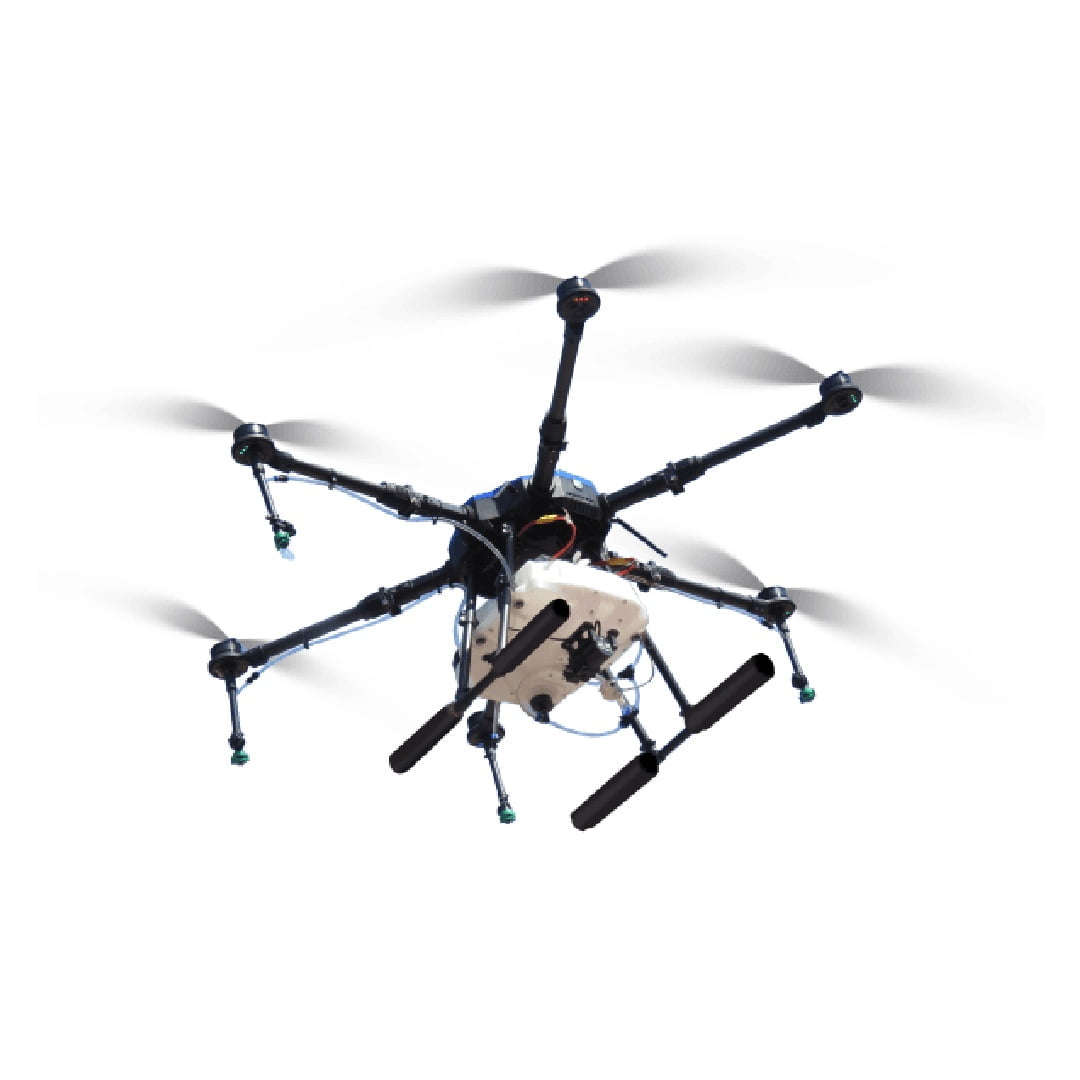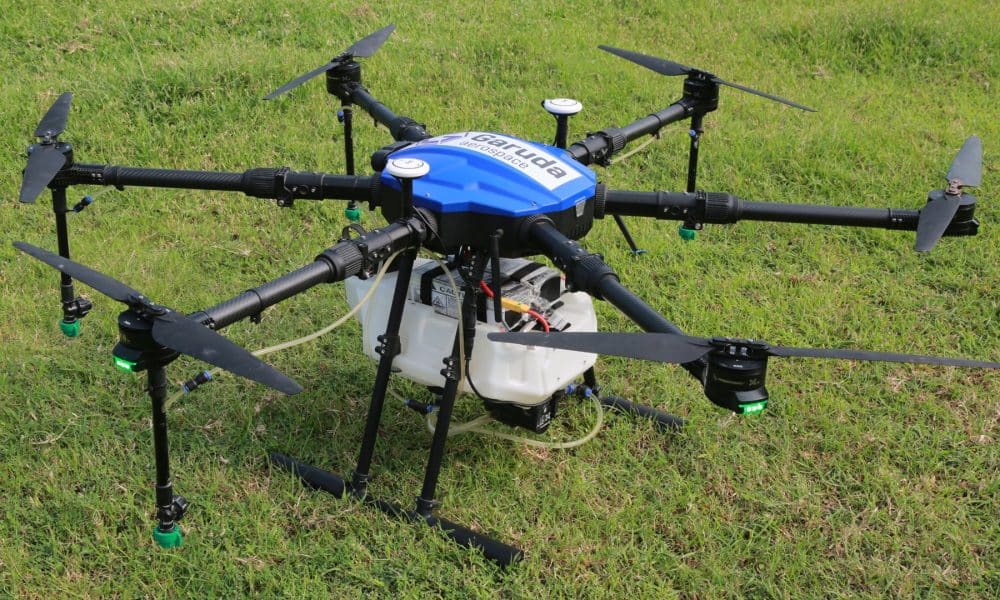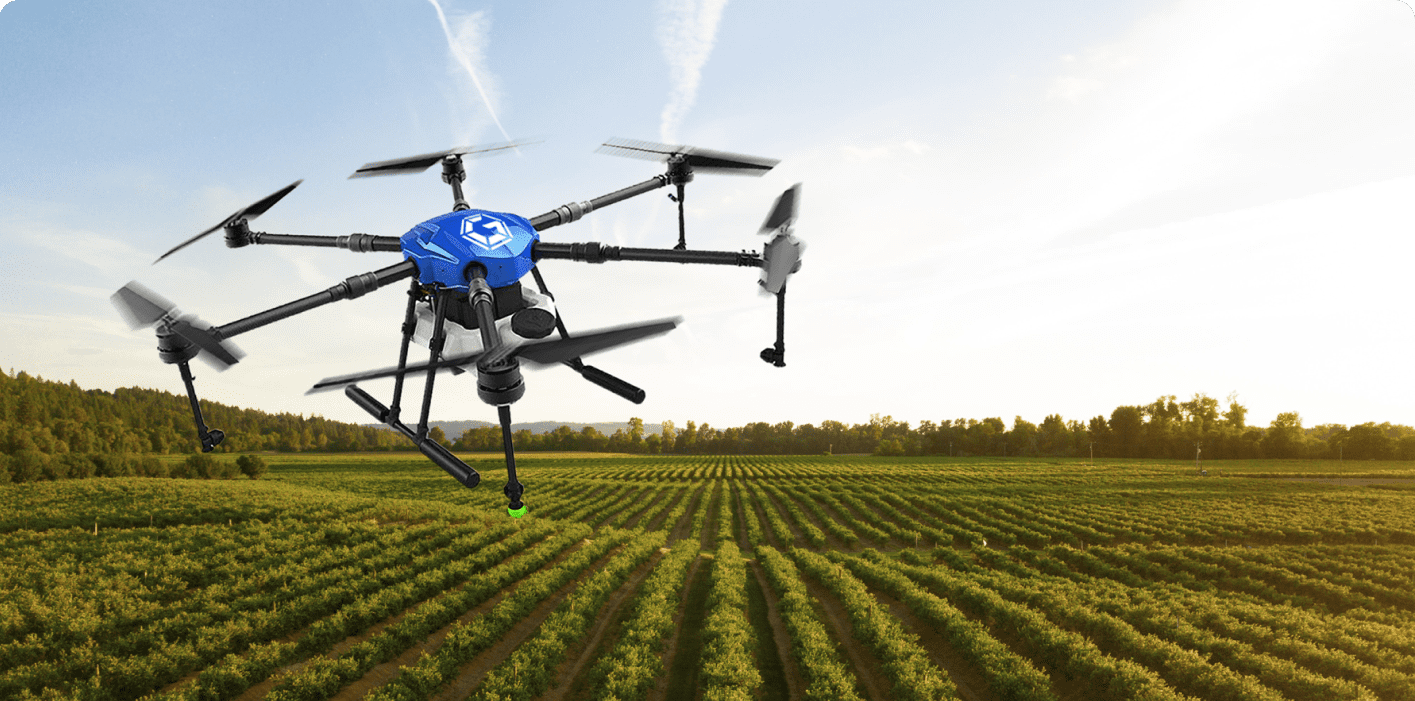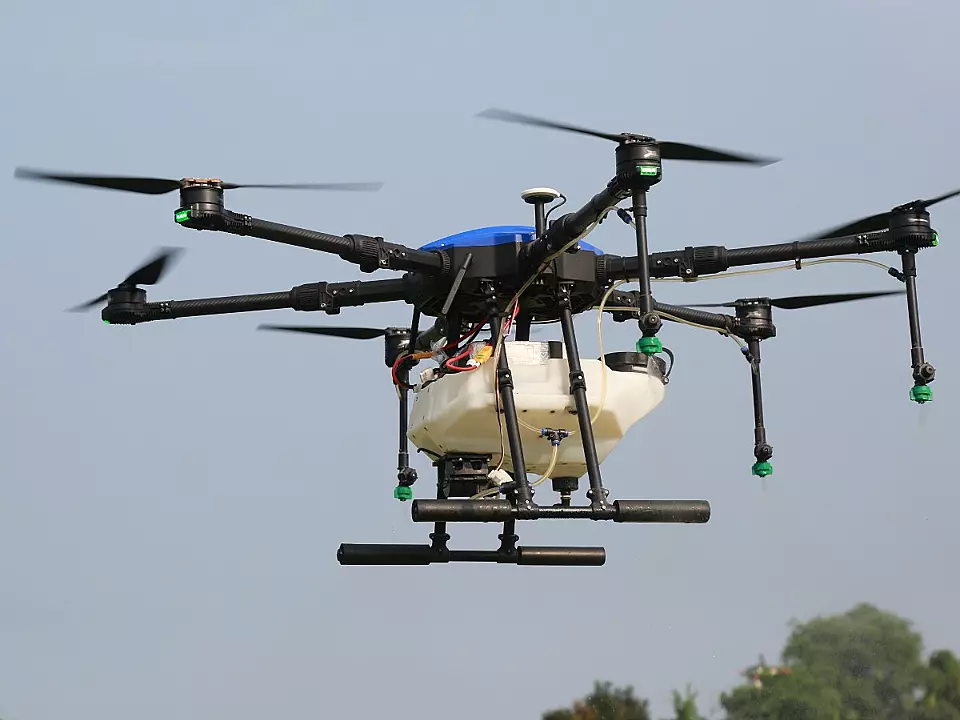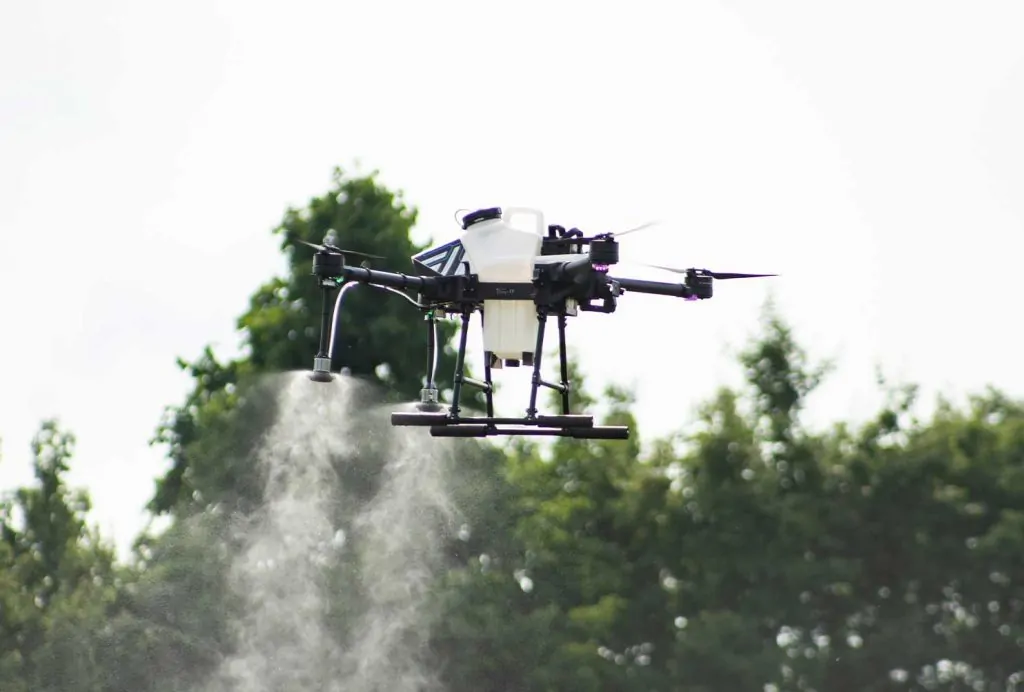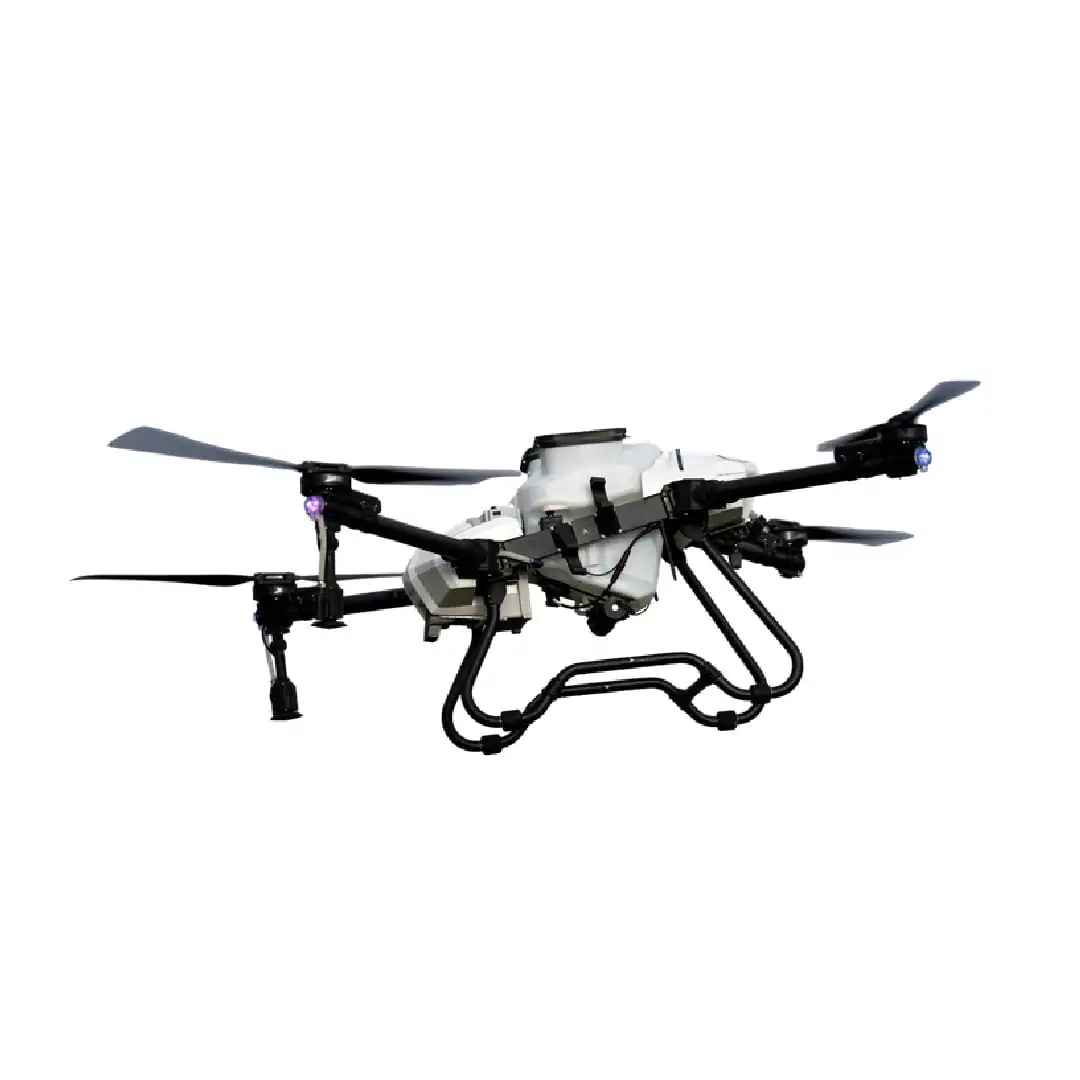The Garuda Kisan Drone is an AI-powered agricultural UAV designed to streamline farming practices and maximize crop yields. This advanced drone leverages artificial intelligence and machine learning to offer precise crop monitoring and spraying capabilities. Available in medium and small categories, the Garuda Kisan Drone is engineered for operational efficiency and cost savings, making it an invaluable tool for modern farmers.
With its advanced features and capabilities, the Garuda Kisan Drone empowers farmers to make informed decisions, optimize resource allocation, and improve overall farm productivity. Whether it’s precision spraying, crop health monitoring, or data-driven insights, this drone is a game-changer for the agricultural industry.
This innovative drone offers a comprehensive solution for precision agriculture, enabling farmers to monitor crop health, apply fertilizers and pesticides with unparalleled accuracy, and optimize irrigation management. Its AI-powered capabilities and user-friendly interface make it accessible to farmers of all skill levels, while its robust design ensures reliable performance in various field conditions.
Key Features
The Garuda Kisan Drone is equipped with a range of features designed to enhance agricultural practices. Its precision spraying system, utilizing 15-20 micron nozzles, ensures efficient and uniform crop coverage, minimizing waste and maximizing the effectiveness of treatments. The AI-powered crop health monitoring system, with a 20MP camera, enables high-resolution monitoring for early detection of diseases, pests, and nutrient deficiencies.
Operational efficiency is a key strength of the Garuda Kisan Drone, offering spraying efficiency of 1500-2500 sq. meters per minute, significantly faster than manual methods. This reduces labor costs and saves valuable time. The drone’s autonomous navigation capabilities, powered by AI and machine learning, allow for efficient data collection and operation execution, further streamlining farming processes.
Safety is paramount, and the Garuda Kisan Drone incorporates features such as RADAR-based obstacle detection, collision avoidance, and autonomous return-to-home safety modes. These features ensure safe and reliable operation, protecting the drone and the surrounding environment. The online dashboard provides real-time control and monitoring, enabling farmers to make informed decisions based on accurate data.
The Garuda Kisan Drone also offers multiple flight modes for customized agricultural performance, allowing farmers to tailor the drone’s operation to specific crop and field conditions. Its DGCA Type Certification ensures compliance with safety and operational standards, providing farmers with peace of mind.
Technical Specifications
| Specification | Value |
|---|---|
| Variants | Medium, Small |
| Flying Speed | 0-10 m/s (Medium), 0-5 m/s (Small) |
| Take-Off Weight | 29.64 kg (Medium), 24.56 kg (Small) |
| Flying Radius | 1500 m (Medium), 0-500 m (Small) |
| Spray Tank Capacity | 10L (Medium), 8L (Small) |
| Operating Altitude | 82.021 ft (Medium), 49.21 ft (Small) |
| Flight Time | 7-8 minutes (full payload), 14-15 minutes (variable payload) |
| Camera Resolution | 20 MP |
| Spray Efficiency | 1500-2500 Sq. m/min |
| Spraying Flow | 2-2.5 L/min |
| Spraying Nozzle | 15-20 microns |
| Battery Capacity | 21000mAh (8L version) |
| Connectivity | 4G Connectivity |
Use Cases & Applications
Farmers are using the Garuda Kisan Drone for a variety of applications, including:
- Precision Agriculture: Applying fertilizers, pesticides, and herbicides with pinpoint accuracy, reducing waste and maximizing effectiveness.
- Crop Health Monitoring: Capturing high-resolution photos for early detection of diseases, pests, and nutrient deficiencies, allowing for timely intervention.
- Irrigation Management: Monitoring soil moisture levels to optimize irrigation schedules and conserve water resources.
- Crop Health Assessment: Evaluating crop health and identifying areas that require attention, enabling targeted interventions.
- Spraying of Chemicals and Fertilizers: Efficiently spraying crops with chemicals and fertilizers, ensuring uniform coverage and minimizing environmental impact.
Strengths & Weaknesses
| Strengths ✅ | Weaknesses ⚠️ |
|---|---|
| Precision Spraying: Equipped with 15-20 micron nozzles for efficient and uniform crop coverage, minimizing waste of resources. | Flight Time: Limited flight time of 7-8 minutes with full payload may require frequent battery changes or multiple drones for larger fields. |
| AI-Powered Crop Health Monitoring: Uses a 20MP camera and AI to enable high-resolution crop health monitoring, facilitating early detection of issues. | Initial Cost: The initial investment of approximately INR 4,50,000 may be a barrier for some small-scale farmers. |
| Operational Efficiency: Offers spraying efficiency of 1500-2500 sq. meters per minute, significantly faster than manual methods. | Regulatory Restrictions: Drone operations may be subject to regulatory restrictions and require permits in certain regions. |
| Autonomous Navigation: Integrated AI and machine learning enable autonomous navigation, data collection, and operation execution. | Weather Dependency: Drone operations are weather-dependent and may be limited by wind, rain, or other adverse conditions. |
| DGCA Type Certification: Certified by the Directorate General of Civil Aviation (DGCA), ensuring compliance with safety and operational standards. |
Benefits for Farmers
The Garuda Kisan Drone offers numerous benefits for farmers, including time savings, cost reduction, yield improvement, and sustainability impact. By automating spraying and monitoring tasks, the drone reduces labor costs and frees up farmers to focus on other important aspects of their operations. Precision spraying minimizes waste of resources, reducing input costs and environmental impact. Early detection of crop health issues enables timely intervention, preventing yield losses and improving overall farm productivity. The drone’s data-driven insights empower farmers to make informed decisions, optimize resource allocation, and improve the sustainability of their farming practices.
Integration & Compatibility
The Garuda Kisan Drone integrates seamlessly into existing farm operations. Its online dashboard provides real-time control and monitoring, allowing farmers to track drone operations and access valuable data. The drone also supports data export for integration with farm management software and other agricultural systems. Its open architecture allows for compatibility with various data formats and platforms, ensuring seamless integration with existing workflows.
Frequently Asked Questions
| Question | Answer |
|---|---|
| How does this product work? | The Garuda Kisan Drone uses AI and machine learning to autonomously navigate fields, collect data via its 20MP camera, and precisely spray crops with its advanced nozzle system. The collected data is processed to provide insights into crop health, enabling early detection of issues and optimized resource allocation. |
| What is the typical ROI? | The Garuda Kisan Drone reduces labor costs associated with manual spraying, minimizes waste of resources through precision application, and enables early detection of crop health issues, leading to increased yields and reduced losses. These factors contribute to a significant return on investment for farmers. |
| What setup is required? | The Garuda Kisan Drone requires initial setup and calibration, including battery charging and software configuration. Training is provided to ensure operators are proficient in using the drone and its associated software. The drone is designed for easy deployment and operation in various field conditions. |
| What maintenance is needed? | Regular maintenance includes cleaning the drone, inspecting the nozzles and propellers, and ensuring the battery is in good condition. Software updates are also provided to improve performance and add new features. Following the recommended maintenance schedule ensures optimal performance and longevity of the drone. |
| Is training required to use this? | Yes, training is required to operate the Garuda Kisan Drone safely and effectively. The training covers drone operation, data collection, software usage, and maintenance procedures. This ensures operators are equipped with the necessary skills to maximize the benefits of the drone. |
| What systems does it integrate with? | The Garuda Kisan Drone integrates with online dashboards for real-time control and monitoring. It also supports data export for integration with farm management software and other agricultural systems. The drone’s open architecture allows for compatibility with various data formats and platforms. |
| What safety features does the drone have? | The Garuda Kisan Drone is equipped with several safety features, including obstacle recognition, collision avoidance, and autonomous return-to-home. These features ensure safe operation and prevent accidents. Smart battery fail-safes also prevent damage to the battery and drone in case of malfunction. |
| What type of crops can it be used for? | The Garuda Kisan Drone can be used for a wide range of crops, including rice, corn, vegetables, and fruits. Its versatile applications in spraying, monitoring, and analysis make it suitable for various agricultural practices. The drone’s customizable flight modes allow farmers to tailor its operation to specific crop requirements. |
Pricing & Availability
The Garuda Kisan Drone is priced around INR 4,50,000 in the Indian market. Pricing can be affected by configuration options and regional availability. Contact us via the Make inquiry button on this page.

